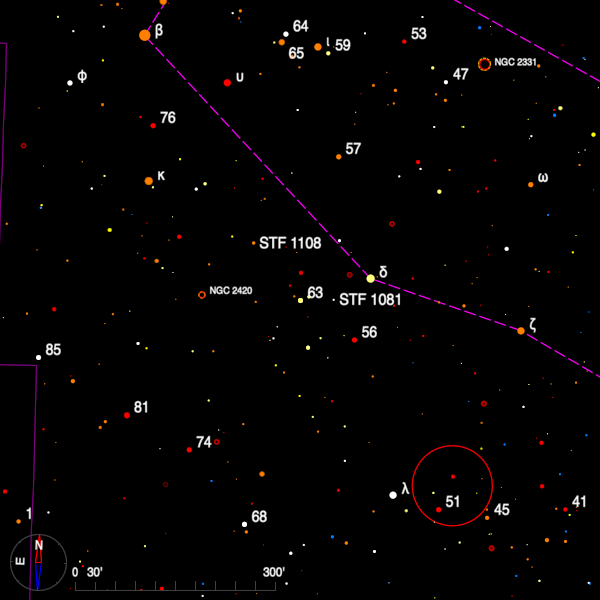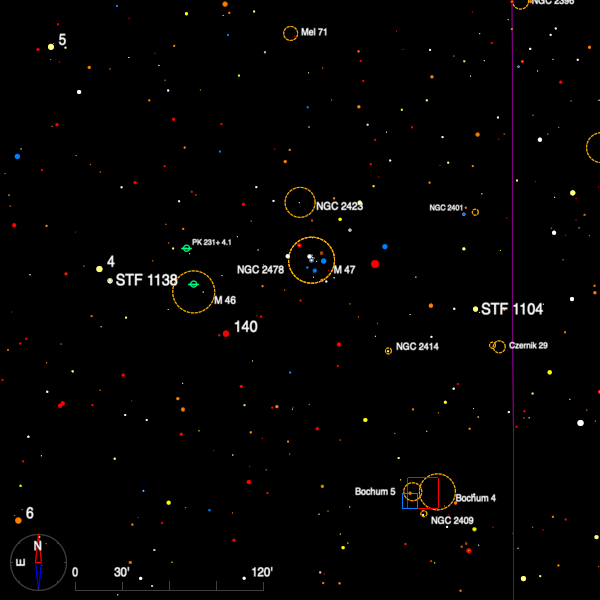February 2023 - Double Star of the Month
One and a half degrees just east of the fine but unequal binary pair delta Gem (see this column for February 2013) is the pair STF 1108 (07 32 50.63 +22 53 15). The star is displayed on page 8 of the second edition of MacEvoy and Tirion's fine Double Star Atlas (CUP) but without a label. Having checked back over my file of measures I note that this pair does not appear in it, nor does it appear in my earlier visual survey carried out with a 21-cm in the late 1960s.

The Washington Double Star catalogue gives the visual magnitudes as 6.6 and 8.2 whilst Gaia DR3 notes G mags of 6.3 and 8.8. There has been little motion since the pair was found by F. G. W. Struve. DR3 notes that the parallaxes are the same within the errors (and indicate a distance to the pair of 643 light-years) although these are some ten times larger than might be expected for stars of this brightness.
Half a degree south is the unequal, wide pair 63 Gem and about a degree to the south-west is STF 1081 (7.7, 8.5, 204 degrees, 1".9, slowly increasing)
2 Pup = STF 1138 (07 45 29.14 -14 41 25.7) lies in a string of naked eye stars which stretch about 30 minutes of RA along the line of south declination 15 degrees. Other objects in this area include M46 and M47 and the binary STF 1104 (see this column for February 2020). STF 1138 is about a degree due east of M46 and is a beautiful, easy pair for the small aperture.

During a visual survey carried out in the late 1960s I found colours of yellow and lilac whereas Admiral Smyth records hues of silvery white and pale white for `2 Argo Navis'. The stars of magnitudes 6.0 and 6.7 were separated by 16".7 at PA 340 degrees when I measured them in 2015, having closed from 17".4 when measured by William Herschel in 1782.
A third star of magnitude 10.6 lies 100" away in PA 229 and is some five times further away than the stars in the pair. They both have very precisely determined parallaxes thanks to Gaia DR3 which puts them 279 light-years away with an uncertainty of about 1 light-year.
Bob Argyle - Double Star Section Director